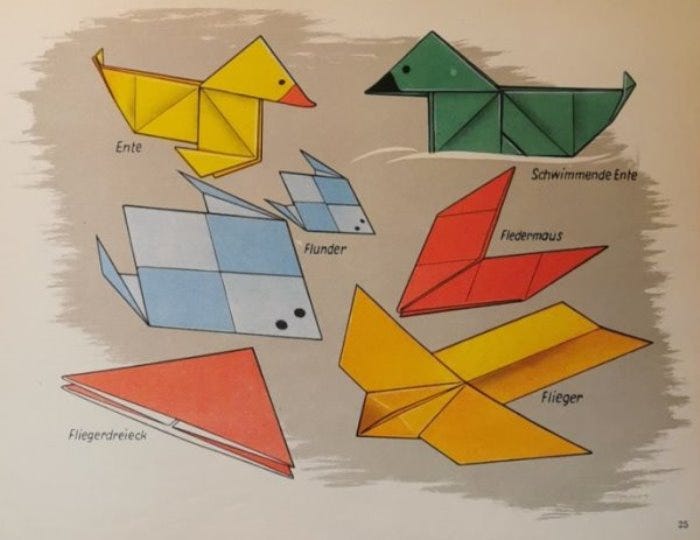I always think of post-war East Germany as being a rather drab place, where children learned in regimented rows in uniformly mediocre schools from books printed in unremitting black and white, though why I think like this, I have no idea. If the book 'Faltet Mit', published in Leipzig in 1955, is anything to go by, it is clearly a false impression.
‘Faltet mit’, as you can see from the cover, and one of the internal pages reproduced below, is a rather lovely, and extremely colourful, book. It was clearly intended for use in schools, since the title page states 'From the German Central Institute for Teaching Materials recommended for use in Education and Training in the German Democratic Republic’.
The reason I mention this book is that it contains a design called ‘Die Zaubertüte’ (or Magic Purse) which is folded from a 2 x 1 rectangle. It’s a ‘Magic Purse’ in the sense that it has two identical pockets, the existence of the second of which is unknown to the audience. Some small object placed into one pocket can thus be exchanged for some other small object previously placed in the other pocket, or made to vanish etc.
The same design appears in several other German books of the period and also as 'The Magician's Purse' in 'Paper Magic' by Robert Harbin (which was published in London in 1956). The diagrams below are extracted from that book.
I’m sure you will immediately see that the only difference between this design and the Two-Way Magic Hat is that they are folded from different rectangles, which means, of course, that you could, if you wished, make hats out of the Magic Purse as well.
My thanks to Edwin Corrie for pointing this out to me.






